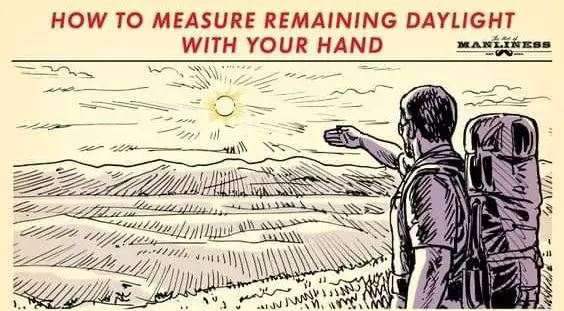Hiking and camping are two favorite activities during the spring, summer and fall seasons, but this favorite pastime often presents dilemmas.
Namely, what should you do when it starts getting dark out, and is there enough light to continue moving further down the trail?
Sometimes, equipment such as phones and watches either runs out of battery power or stop working when you get far enough out into the wilderness.
That’s why this trick for measuring the day’s remaining sunlight comes in handy.
Measuring the Sunlight Using Your Hands
The scenario happens often, but that doesn’t make it any easier.
While hiking and camping, you are forced with the decision to continue on or set up camp.
If only you know how much daylight was left, you could make a more informed decision.
That’s where this trick comes in handy. It varies depending on your geographical location, but works pretty much anywhere.
In the north, the sun sets at shallower angles, allowing for more usable light than your hands will show.
In tropical regions, the day grows dark quicker, and the sun sets nearly straight down.
Here’s how to decipher how much sunlight is left:

1. Face the sun and extend your arm in front of your so your palm faces back toward you, and your fingers are parallel to the horizon.
Make sure to take your environment into account, as mountains and other obstacles tend to obscure the sun fast. Open areas are different.
2. Place your index finger just below the sun, and your pinky finger parallel to the edge of the horizon.
3. Count the number of fingers it takes for you to reach from the sun to the horizon. Each finger in ascending order represents 15 minutes until the sun sets.
4. Line up your other hand directly below and continue counting, if space allows. Each hand represents about one hour.
Check out the chart below from TreeHugger.com to see how it works in practice.
Did you know how to do this before reading the article, and is there anyone in your family you would like to share this information with?

Article Source: ‘The Illustrated Art of Manliness,’ book by Brett McKay with illustrations by Ted Slampyak.





